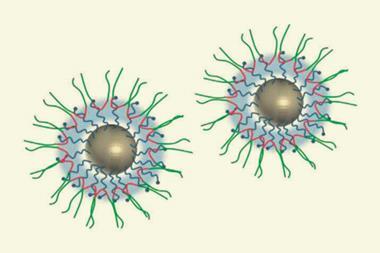A molecular muscle with the power to move nanorobots large and small has been developed by researchers in the UK.
A molecular muscle with the power to move nanorobots large and small has been developed by researchers in the UK.
Tony Ryan, from Sheffield University, led the research. Ryan’s team made a synthetic muscle from a self-assembled block copolymer that changes shape in response to changing pH. ’We’ve actually made a chunk of material and it bent a spring, we’ve measured the force,’ Ryan said.
The muscle proved its strength by moving a cantilever up and down during the course of an oscillating chemical reaction. The force was comparable to that from a eukaryotic spindle, and Ryan admits that this is not a strong muscle. But he is encouraged by the scalability of the force over five orders of magnitude. This means if a molecule in the material is deformed by 10 nm, the piece of material made up of those molecules will move 1 mm. This property comes from the material’s affine nature - all the particles in the solid move relative to each other. ’The scaling means you can make muscles for fleas and muscles for elephants out of the same material,’ said Ryan.
Ryan said the muscle is another component that he hopes will eventually lead to a working nanorobot. ’The nanobot is designed on biological principles rather than mechanical engineering principles,’ Ryan said, ’we’ve just got to work out how to fit the force generator - the motor - into a membrane.’ He likened it to a piece in a meccano set, ’we just haven’t got the instructions about how to join them together yet.’
Geoffrey Ozin, a nanochemistry expert at the University of Toronto, Canada, was impressed that Ryan’s group incorporated a chemical oscillator to give a running nanomotor. He said Ryan’s work was ’another creative and clever step towards helping to show the way to biological and abiological powered nanobots that can perform a useful task.’ Katharine Sanderson
References
et alNano Lett., 2006 (DOI: 10.1021/nl0520617)







No comments yet